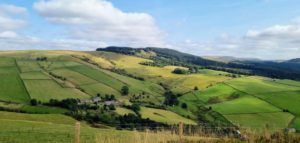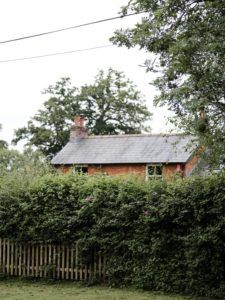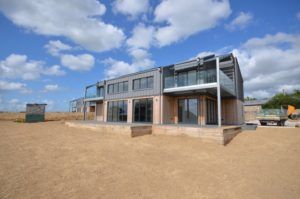Whilst agricultural buildings in the open countryside are quite typical and generally accepted in policy terms, where a landscape designation such as a National Park or Area of Outstanding Natural Beauty is relevant, the Local Planning Authority (LPA) must give greater consideration to the landscape impact. Where the development involves intensive agriculture, in addition to the overall scale and impact on the protected landscape, potential environmental effects are also of relevance.
Replacement Poultry Buildings

In this case, the site in Devon contained a number of redundant buildings formerly used for pullet rearing. Our client purchased the site for the purpose of expanding their broiler breeder business and instructed Acorus to seek planning permission for the provision of new buildings.
Whilst the scale of the business was below the threshold for Environmental Impact Assessment (EIA) development and an Environmental Permit, because of the sensitivity of the site in landscape terms and various residential receptors in the locality, a robust and well-considered application was necessary.
In addition to providing various sustainability features such as water recycling, an attenuation basin and reed beds, the most important and unique feature in this case is the inclusion of a biofiltration system using bark as a substrate to eliminate dust and odour, and substantially reduce ammonia emissions. This is the first poultry unit in the UK to be designed in such a way and is particularly important in light of DEFRA’s Clean Air Strategy.
Environmental Impact Assessment
Regulated under the Town & Country Planning (Environmental Impact Assessment) Regulations 2017, it is the drawing together, in a systematic way, an assessment of a project’s likely significant environmental effects. Overall, it helps to ensure that the importance of the predicted effects, and the scope for reducing them, are properly understood by the public and the relevant competent authority before it makes its decision.

An EIA and the provision of an Environmental Statement (ES) to accompany a planning application is required for an intensive poultry installation where the development is greater than 85,000 places for broilers or 60,000 places for hens (Schedule 1) or, potentially, where a new floorspace exceeds 500 square metres (Schedule 2) and the LPA considers there is still the potential for significant environmental effect.
A screening/scoping process can be undertaken initially with the LPA to determine whether a scheme is considered to be EIA development and, if so, the extent of information needed to form the basis of the ES.
You can view our information sheet regarding Agricultural & Horticultural Buildings if you require more information about planning permission, alternatively contact our team today.

Environmental Permit
An Environmental Permit is issued by the Environment Agency and allows the operator to carry on the intensive agricultural activity, and sets outs clear instructions and management practices that must be undertaken in order to protect the environment from this installation. The permit is separate to the planning consent which allows the development to be established, and is only applicable for poultry installations of more than 40,000 bird places.
Planning Success
The application was considered by the LPA and after extensive consultation with officers, planning permission was granted. Acorus has advised the client throughout the process and facilitated the application through to its determination. Special thanks to landscape architect Anne Priscott, Powell & Co Construction Ltd and Draper Ventilation Ltd for their valuable input.
Our client is delighted with the outcome and looks forward to receiving the first batch of birds later this month.
Acorus will also be present at the British Pig & Poultry Fair in Stoneleigh Park, Warwickshire on May 10 & 11.

Suppliers, processors, retailers and other producers will be meeting up to share ideas, tackle current difficulties and plan ahead.






